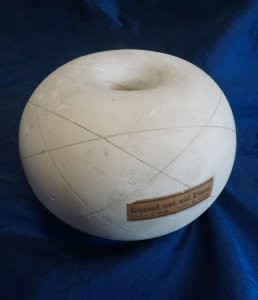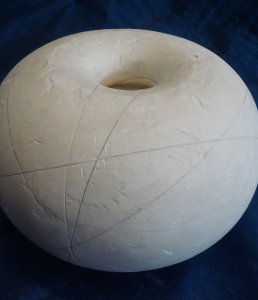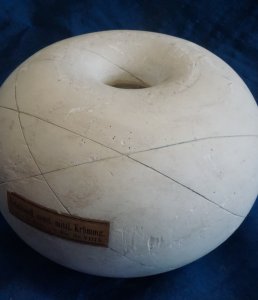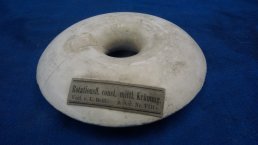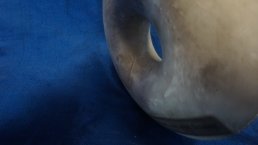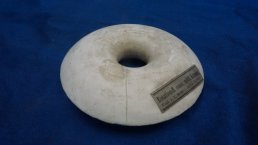Nodoids
A "nodoid" is another surface of revolution with constant non-zero mean curvature. It is generated by a hyperbolic catenary, which is in turn generated by rolling a hyperbola along a line, as explained in Constant Mean Curvature. This is a bit more complicated than for the other conics, since a hyperbola has two components. The curve turns out to be periodic - see here for a helpful animation [1]. The small loop rotates to give model II 3c, and taking one of the two larger loops corresponds to model II 3b.
Nodoids self-intersect, although the piece shown in model II 3c does not do this. It is in fact part of model II 3b - the piece hidden inside the larger boundary. Model II 3b displays one period so as to exhibit some of the interior through the "hole" at the top. On each are drawn geodesic lines. As with the unduloid, depending on the angle at which they meet the vertical, geodesics either approach the thin circle at the end of the period, or are contained entirely between two parallel circles. Again, vertical geodesics just shoot upwards to infinity. Note that the surface is periodic in the $z$ direction.
Model II 3b
Model II 3c
References
[1] http://www.mathcurve.com/courbes2d/delaunay/delaunay.shtml





